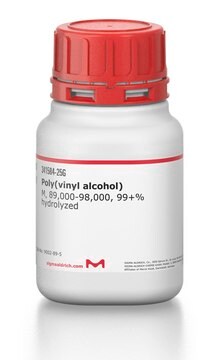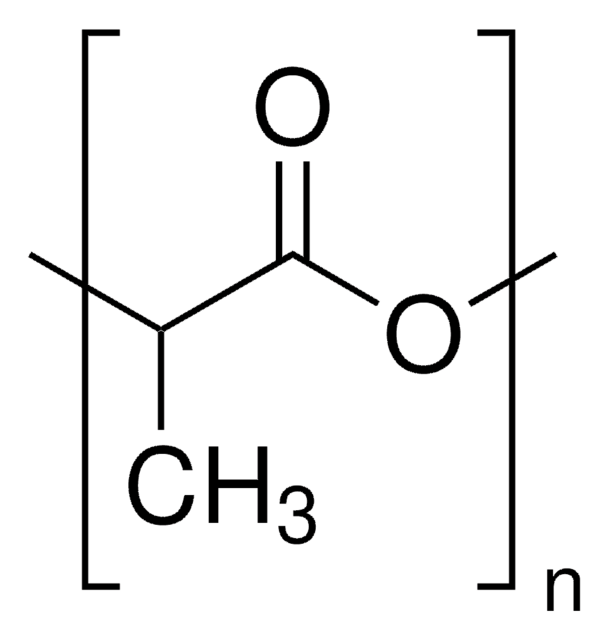38534
Polylactic acid
Mw ~60,000
Sinônimo(s):
Poly(2-hydroxypropionic acid)
About This Item
Produtos recomendados
Formulário
solid
prazo de validade
limited shelf life, expiry date on the label
peso molecular
Mn ~30,000
Mw ~60,000
cadeia de caracteres SMILES
[O-]C(=O)C(O)C.[H+]
InChI
1S/C3H6O3/c1-2(4)3(5)6/h2,4H,1H3,(H,5,6)
chave InChI
JVTAAEKCZFNVCJ-UHFFFAOYSA-N
Procurando produtos similares? Visita Guia de comparação de produtos
Descrição geral
Aplicação
It can be used to prepare PLA/polyvinyl alcohol wound dressing membrane through electrospinning and coating method. The coating of PLA improves the mechanical strength of nanofiber and acts as a protective layer to control the release of drug to the wound site.
It can also be used to synthesize free-standing, flexible ultra-thin PLA nanofilms which can act as a matrix for adhesion, spreading, and proliferation of skeletal muscle cells.
Características e benefícios
- Biocompatibility
- Lower toxicity
- Low cost
- Better encapsulation
produto relacionado
Código de classe de armazenamento
11 - Combustible Solids
Classe de risco de água (WGK)
WGK 3
Ponto de fulgor (°F)
Not applicable
Ponto de fulgor (°C)
Not applicable
Equipamento de proteção individual
Eyeshields, Gloves, type N95 (US)
Escolha uma das versões mais recentes:
Já possui este produto?
Encontre a documentação dos produtos que você adquiriu recentemente na biblioteca de documentos.
Os clientes também visualizaram
Artigos
In this article, we discuss issues critical to successful application of the electrospinning technique, including control of individual nanofibers to form secondary structures and assembly of nanofibers into 3D architectures.
Nossa equipe de cientistas tem experiência em todas as áreas de pesquisa, incluindo Life Sciences, ciência de materiais, síntese química, cromatografia, química analítica e muitas outras.
Entre em contato com a assistência técnica








